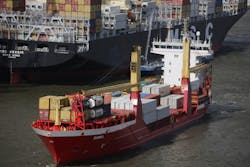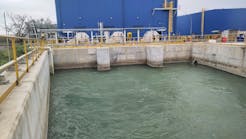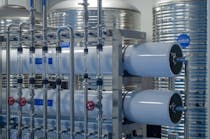The International Convention for the Control and Management of Ships’ Ballast Water and Sediments (2004) — herein referred to as the ‘BW Convention’ — is now an integrated part of operating a modern shipping fleet. Since 2017, all compliant ships have been employing a certified ballast water management plan, and any applicable vessels not yet fitted with a suitable ballast water treatment system should now be scheduled to install one before the next International Oil Pollution Prevention (IOPP) survey. By 2024, every vessel engaged on international voyages and fitted with a sea water ballast system should be in compliance with the ‘D-2’ standard for Ballast Water treatment, relegating the ‘D-1’ standard for ballast water exchange to a contingency measure, should the ship’s treatment plant become inoperative.
Of course, such regulations require enforcement, and in the case of the BW Convention, that is dealt with, in part, in Article 9 — Inspection of Ships. However, this is where problems may be encountered by ship operators. The article states that inspectors can conduct:
“a sampling of the ship’s ballast water, carried out in accordance with the guidelines to be developed by the organization”
This ambiguity holds significant implications for vessel operators and port state control inspectors who need to understand a new testing regime that will be applied to their vessels. Accordingly, the IMO ‘G2’ guidelines have been produced for the Sampling of Ships’ Ballast Water, and while these do seek to address the issue, the technical and procedural guidance lacks significant detail. More fundamentally, there remains a disconnect between the high-level aims of policing the discharge limits set out in the D-2 standard, and the practical methods of sampling that can be employed during an inspection.
Arguably, the sampling regimes that will be employed during ship surveys should aim to:
i. Ensure the ship is compliant with the BW convention and relevant territorial legislation and is not posing a threat to the marine environment by acting as a vector for invasive species and bacteria.
ii. Conduct sampling using practical and realistic methods with equipment suitable for use aboard ship.
iii. In accordance with article 9 on the BW convention; carry out accurate sampling and analysis that does not unduly delay the operation, movement or departure of the ship.
The lack of an agreed standard and methodology for the sampling of ships’ ballast water creates uncertainty for ship owners and technical operators. It is for this reason that Chelsea works closely with the IMO and other organizations on the development of equitable and workable solutions.
So, here are three steps responsible ship operators could take today to ensure their fleet is ready for the development of the global ballast water survey and inspection regime:
1. Seek advice on responsibilities. Most maritime state legislatures have made provisions intended to hold ship owners or operators accountable for ‘knowing’ or ‘negligent’ pollutant discharges in territorial waters. In the US, for example, there are a number of articles of state and federal legislation that render ship operators prosecutable for non-compliant ballast water discharge — even if a treatment system is in use. While investing in a quality, type-approved treatment system is a good idea, relying on a type approval certificate and subsequently assuming that all ballast water discharges are compliant, is a potentially troublesome strategy.
2. Take a proactive approach to ballast water discharge monitoring. Once a treatment system is installed, being able to provide evidence of an ongoing water quality monitoring program not only provides an ability to check the performance of treatment systems over time, but potentially helps safeguard against prosecution. The efficacy of treatment systems, many of which were installed at considerable cost, should be periodically monitored to understand the health of the system and provide peace of mind that discharges are compliant. Think of it as doing chart corrections or swinging the compass. While most good treatment systems provide self-monitoring of basic system functionality (as is required by the regulations), this monitoring does not include measuring the quality of the resultant outflow, thus cross-checking its compliance.
3. Understand what inspectors will test and measure in ballast water. Every ship survey is imbued with a degree of risk to the ship operator and while this is an accepted reality of ship operating, the commercial landscape in shipping today favors operators who take a pragmatic approach to rounding-off their risk registers. By taking steps to perform indicative compliance-level checks on ballast water discharge flows, problems can be foreseen before environmental damage occurs or prosecutions, delays and fines are issued by an enforcement authority. Chelsea Technologies’ patented FastBallast Compliance Monitor, is a small, lightweight and rapid ballast water testing instrument, designed to provide a lab-accurate assessment of ship’s ballast water discharge against key elements of the D-2 Standard. The instrument integrates a sophisticated measurement technique with a convenient, easy-to-use interface. The patented Single-Turnover Active Fluorometry (STAF) technology only requires a cap full of ballast water to test automatically in under 8 minutes.
For more information, or to place an order, contact Maritime Sales Manager Emma Johnson by emailing [email protected].


